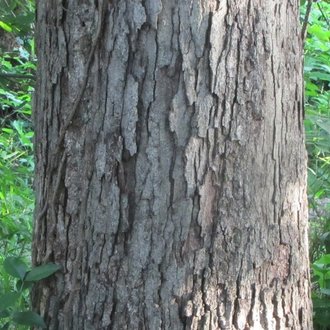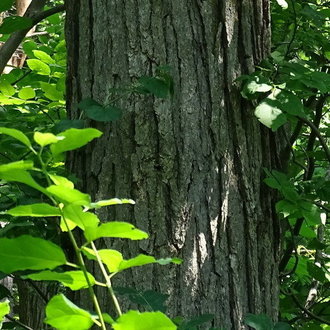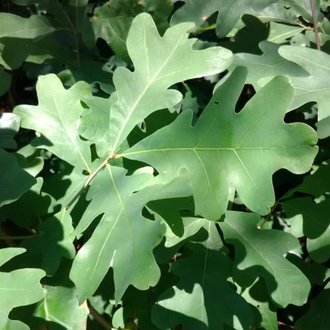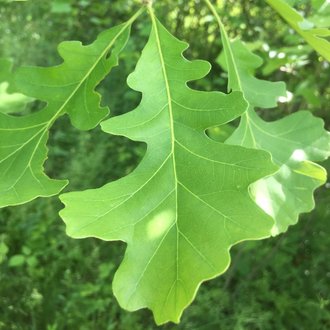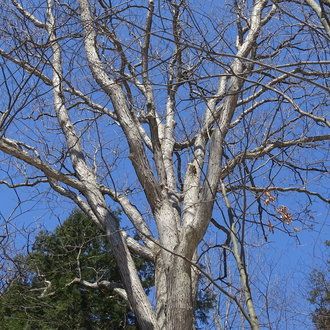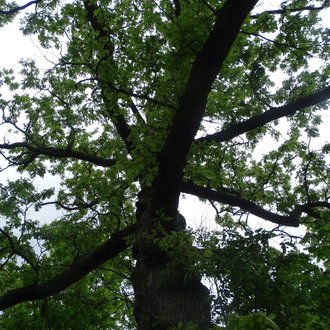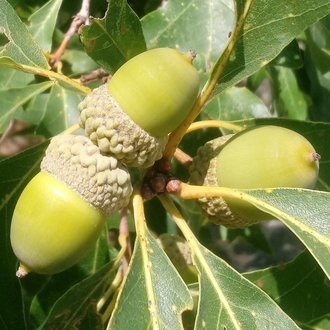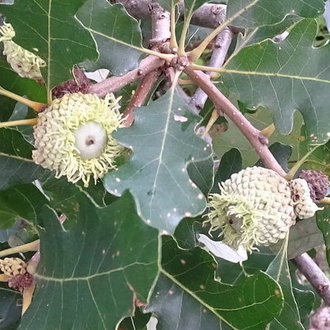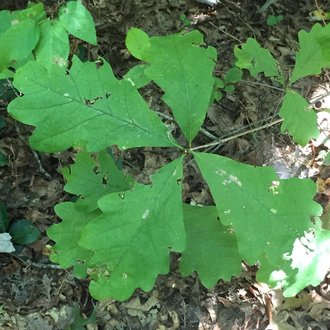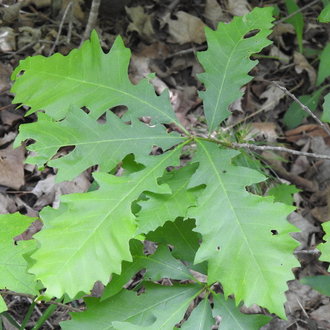White Oak vs Bur Oak
These two oaks of the white oak group are sometimes confused, but are relatively easy to tell apart by leaf, acorns, bark, and shape. Although they can co-occur on some sites, Bur Oak is more likely in flood-prone bottomlands, fire-prone savannas at the transition zone to prairie, on calcareous soils, or on extremely dry ridges, whereas white oak is more likely in mesic to slightly dry oak forests. These species are more likely to occur together in landscaping than in the wild.
White Oak (Quercus alba) | Bur Oak (Quercus macrocarpa) |
A widespread oak that is a key component of forests across eastern North America, often found in slightly dry conditions. | A rugged oak native to North America, with a wide distribution, ranging farther west and north than most oaks that also occur in the east. |
Bark thinner, lighter colored, and looking to be flaking off more. Photo © Ken Kneidel, Public Domain. | Bark more rugged: thicker, darker, and consisting of long, tough ridges, not as flakey. Photo © Reuven Martin, Public Domain. |
Side veins on leaves all make the same angle with the central vein, and proceed straight without curving. Foliage often paler in color. Photo © Claire Secrist, Public Domain. | Side veins close to the leaf base often make more perpendicular angle with the central vein, and often curve outward to become more perpendicular close to the leaf margin. Photo © askalotl, Public Domain. |
Branches often angle upward at small angles relative to the trunk. Tree crowns in forests often have a vase-shape. Photo © Reuven Martin, Public Domain. | Massive branches high up on the tree can make abrupt and sometimes strange-looking angles with the central trunk. Photo © Reuven Martin, Public Domain. |
Acorn cap only covers a small portion of the acorn. Acorn cap scales do not have elongated tips. Photo © Even Dankowicz, CC BY 4.0. | Acorn cap massive, often enclosing half or more of the acorn, sometimes enclosing nearly the entire acorn. Bud scale near edge of cap have elongated tips, curling back, leading to a "mossy" appearance. Photo © Reuven Martin, Public Domain. |
Fewer lobes (usually 7-9) and side-veins. Photo © Ken Kneidel, Public Domain. | Number of lobes and side-veins variable, but can have far more lobes / veins. Photo © Joanne Redwood, Public Domain. |
References & External Resources
These short lists show only links helpful for ID. For a complete list of references and resources also covering other aspects of ecology, visit the links section of the full article on each plant, which is the first entry here.



